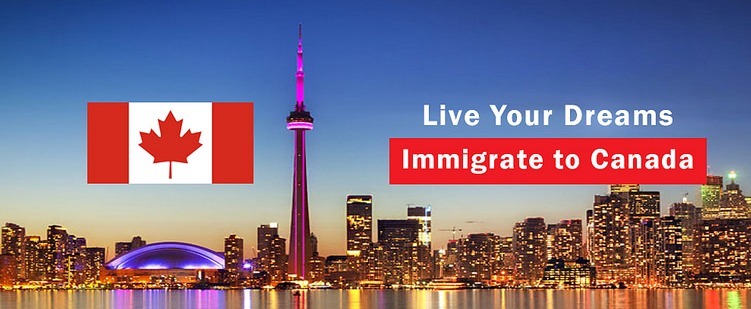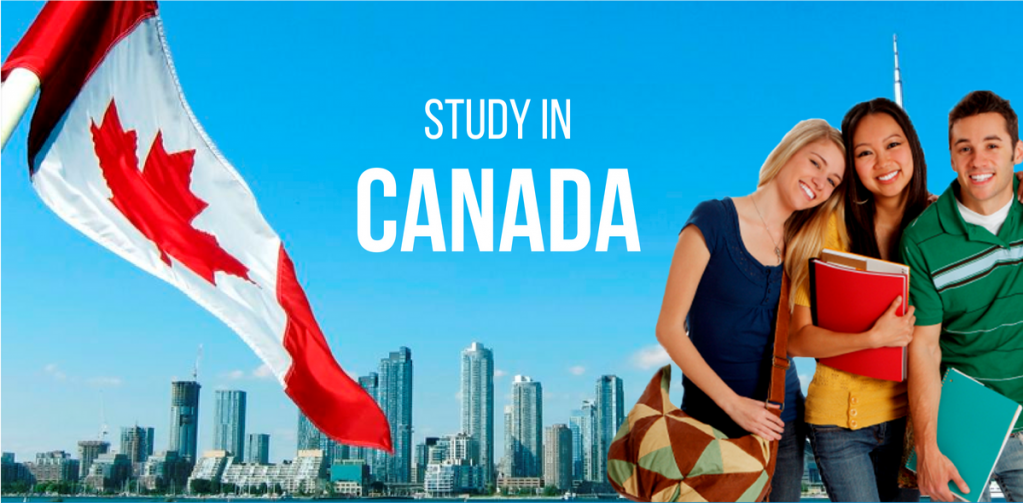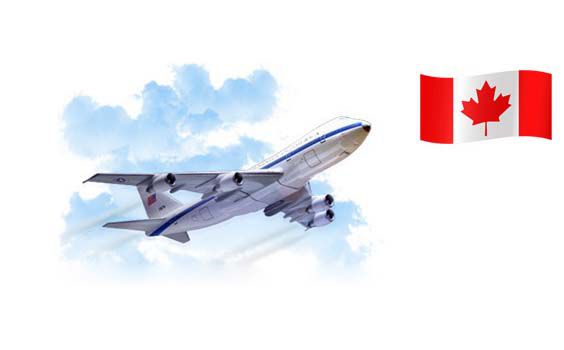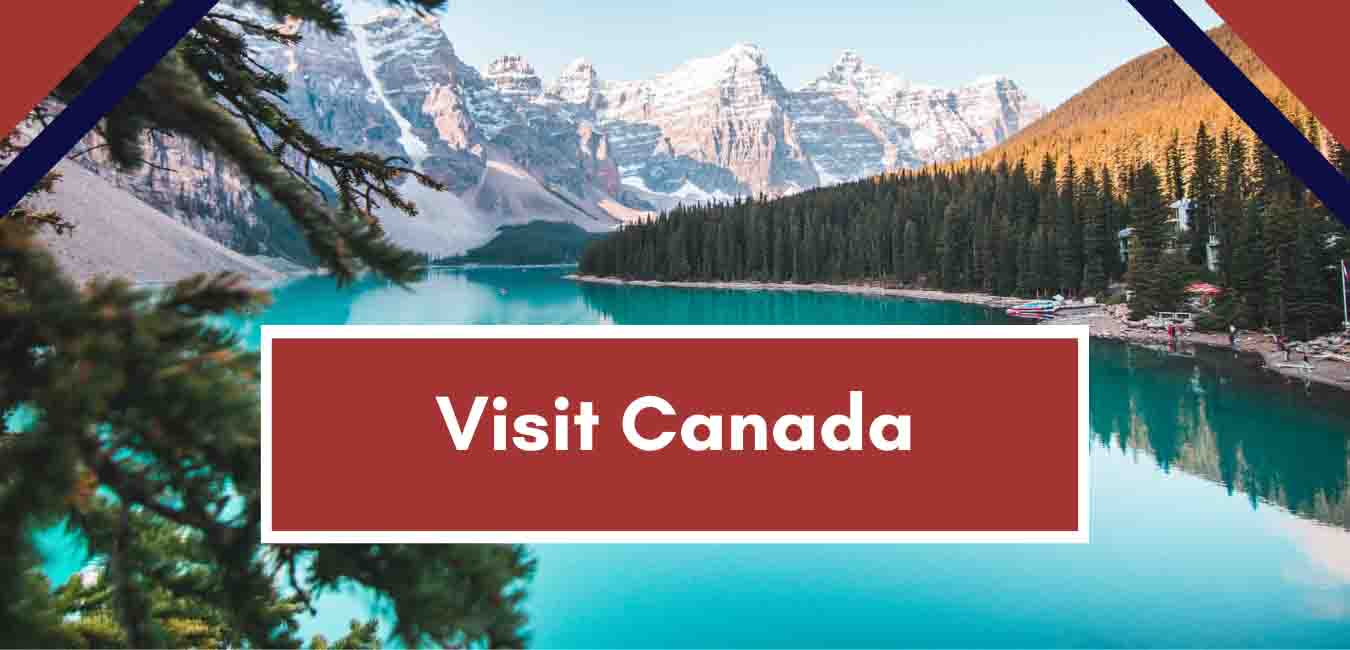Canada
Immigrate to Canada
Canada Immigration on a PR visa is the wisest option for candidates who wish to settle in the country permanently. Canada PR visa allows you to live, work, and study anywhere in Canada permanently for 5 years. An applicant can migrate to Canada on a PR Visa through many pathways like Express Entry, PNP, Family Sponsorship, Start-up visa, Quebec Immigration Program, and Caregiver Visa.


Study in Canada
Students from across the world flock to the Canadian universities to pursue various courses. Strong infrastructure, cutting edge curriculum, and sprawling campuses are all the hallmarks of every Canadian institution. One way to improve your chances is to get a Canada PR to study in Canada.
VistaEverest works with students to help them increase their chances of studying in Canada and help them get their Canada student visa. We help students identify and apply to the right course and right college that can serve as a launchpad for their international career.
Canada Work Permit
Canada Work Permit is issued to applicants who meet the specific eligibility requirements. People need to apply for a Work Visa only after getting a job offer or an employment contract from a Canadian employer. The employer must obtain from ESDC (Employment and Social Development Canada) an LMIA (Labour Market Impact Assessment), which permits them to recruit foreign skilled workers for occupations that cannot be filled in by citizens or permanent residents of Canada.


Canada Visit Visa
Millions of visitors and tourists flock to Canada every year to visit friends and family or to just experience Canada’s natural beauty. VistaEverest can help you too with our quick Canada Visa services. The Canada visa is granted for a period of six months and are either single entry or multiple entry visas. While you cannot work on the Canada visit visa, you are free to travel across Canada for tourism and leisure.
F.A.Q.
Frequently Asked Questions
A permanent resident (PR) card is official proof of your status as a permanent resident in Canada. As part of the immigration process, new permanent residents will automatically receive a card by mail when they first arrive in Canada. This is part of the immigration process and you do not need to apply for a PR Card. As part of the process, the required documents are filled out by the Canadian border officials when you first land in Canada. No further action is required from you. It usually takes three to four months for your first PR card to arrive by mail. You can check the latest processing times on the government website for up-to-date information on timelines.
It is helpful (but not mandatory) to have a Canadian address ready to share with the officer at the border – this is for the delivery of your PR card. If you move to another location in Canada before your PR card arrives, be sure to inform Immigration, Refugees and Citizenship Canada (IRCC) about your address change.
Alternatively, if you are renewing your PR card, need to change your legal name or gender designation on the card, need to replace your lost, stolen or damaged card, or have a unique immigration situation, here are the steps to apply for a new PR card:
- Gather documents: Including your PR card if you are renewing it, valid passport or travel document, photos, translation of documents if they are not in English or French.
- Fill out application form: Complete the Application for a Permanent Resident Card and Document Checklist form.
- Pay the fees: The fee for a PR card is $50 CAD and Biometrics fee is $85 CAD per person or $170 CAD per family. Include payment receipt with your application.
- Send your application: Mail or send your application by courier.
A permanent resident (PR) is someone who has been given permanent resident status but is not a Canadian citizen. When foreign nationals first apply for and receive permanent residency, they are issued a PR visa in their passport. It provides approved individuals a one-time entry to Canada and has a validity period during which individuals are expected to travel to Canada and complete their landing formalities. Individuals who are in Canada temporarily such as a student, foreign worker or visitor, are not considered permanent residents and would not be issued a PR visa. The most sought after way to settle as a PR in Canada is through immigration streams such as Express Entry and Provincial Nominee Programs (PNP). Refugees can also become permanent residents through the Government-Assisted Refugee Program or the Private Sponsorship of Refugees Program.
There are many ways newcomers can immigrate to Canada. A number of immigration programs are available that lead to permanent residency, including:
- Express Entry (EE): This is the most popular way to immigrate to Canada, due to its quick processing times.
- Provincial Nominee Programs (PNP): This is aimed at individuals who have the skills, education and work experience to contribute to a specific province or territory.
- Atlantic Immigration Pilot (AIP): This program is for skilled foreign workers and international graduates who want to live and work in Newfoundland and Labrador, Prince Edward Island, Nova Scotia, and New Brunswick.
- Start-up Visa (SUV): Entrepreneurs with the skills to build innovative businesses in Canada, create jobs for Canadians, and compete on a global scale, can apply for a Start-up Visa.
- Rural and Northern Immigration Pilot (RNIP): This is a community-driven program designed to spread the benefits of economic immigration to smaller communities by creating a path to permanent residence for skilled foreign workers who want to live and work in a participating community.
- Family Sponsorship: Family sponsorship provides a route for spouses, partners, children, parents, grandparents, and in certain cases, other relatives to live, work and study in Canada as PRs.
- Quebec-selected Skilled Workers: This program is for skilled workers who wish to move as PRs and live and work in Quebec.
- Caregivers: Caregivers can come to Canada to become a PR or work temporarily through the Home Child Care Provider Pilot and Home Support Worker Pilot or Live-in Caregiver Program (LCP).
- Self-employed: The Self-employed Persons Program allows individuals with relevant experience in cultural activities or athletics to immigrate to Canada permanently as a self-employed person.
- Agri-food Pilot: This program helps address the labour needs of the Canadian agri-food sector and can be a pathway to PR.
Your family may be able to immigrate with you to Canada if they are processed for PR as your dependents. This includes:
- Spouse or common-law partner
- Dependent child
- Your spouse or common-law partner’s dependent child
- A dependent child of a dependent child
However, your dependents are not permitted to arrive in Canada before you.
You can also sponsor eligible family members through the Family sponsorship program. This allows family members to live, work, and study in Canada. As a sponsor, you need to prove you will:
- Meet basic needs of food, shelter, and clothing for your family member
- Be able to support the family member financially for a period of time
- Not be receiving social assistance for reasons other than a disability
In order to be eligible for Canadian citizenship, you must:
- Be a permanent resident
- Filed your taxes for at least three years
- Pass a citizenship test
- Prove your language skills in English or French
- Not have a criminal record
There are several steps involved in applying for Canadian citizenship:
- Calculate your physical presence in Canada: You must have been physically present in Canada for at least 1,095 days (three years).
- Download and fill out an application package: Be sure to fill out the form correctly, include two certified citizenship photos and all supporting documents, such as immigration documents, proof of language, photo ID.
- Pay application fees: The fees for each adult citizenship application are $630 CAD and each minor application (less than 18-years-old) is $100 CAD.
- Submit your application: Send your completed application package by mail or courier as soon as possible.
- Take a citizenship test: Once your application has been reviewed, you may be invited to take a citizenship test within weeks after your acknowledgement of receipt (AOR) letter. The citizenship test is based on the official citizenship study guide, Discover Canada: The Rights and Responsibilities of Citizenship. You can take the test in English or French.
- Attend an interview: Immediately after your test, a citizen official will meet with you and check your language skills, verify your application and original documents and ask questions they may have.
- Take the Oath of Citizenship: The citizenship ceremony is the final step to becoming Canadian and usually takes place within three months after your test.
The Express Entry (EE) program is one of the most sought after and popular ways to immigrate to Canada. Express Entry is an online immigration application system that allows prospective newcomers to be considered as a skilled immigrant. A EE profile will determine your ranking and can be used to apply for:
- Federal Skilled Worker (FSW) program: This program is for applicants with significant foreign work experience and/or a high level of education who want to immigrate to Canada permanently.
- Federal Skilled Trades (FST) program: This program is for skilled tradespeople who want to immigrate to Canada.
- Canadian Experience Class: This program is for foreign nationals who have been working in Canada for a period of at least one year to apply for Permanent Residence (PR).
In order to create an Express Entry profile, you’ll first need to create an Immigration, Refugees and Citizenship Canada (IRCC) account then submit your profile to formally enter the Express Entry pool of candidates. To create your profile, you’ll need:
- National Occupational Classification (NOC) number: This is the system the Canadian government uses to classify various jobs and occupations.
- Education credential assessment (ECA): This report verifies that your foreign degree, diploma, certificate, or other credentials are valid and equal to a Canadian one.
- Approved language test: Test results can be for either English or French. This test evaluates your language skills in speaking, reading, listening, and writing.
The Government of Canada has an online tool that will help calculate your Comprehensive Ranking System (CRS) score. CRS is the points-based system Canadian immigration uses to assess and rank your profile in the Express Entry pool. Some factors the tool assesses are:
- Skills
- Education
- Language
- Work experience
This score (up to 1,200 points) can be used to check if you rank above the minimum required points from the most recent round of invitations.
Foreign nationals will need a work permit to be allowed to work in Canada. However, sometimes you may be eligible to work in Canada without a work permit.
There are two types of work permits:
- Open work permit: This allows you to work for any employer in Canada and you can only get an open work permit in specific situations.
- Employer-specific work permit: Also called a closed work permit specifies the name of the employer you can work for, location, and for how long you can work.
- The other way individuals from other countries can legally work in Canada is to apply for International Experience Canada (IEC) which is also known as a Working Holiday Visa. Learn more about IEC, check eligibility, and get information on processing times and fees on the government website.
International students in Canada may also be eligible to work. Some study permits list a condition that says you’re allowed to work on- or off-campus while in school. However, once you graduate, you’ll need to apply for a work permit in Canada or apply for a Post-graduate Work Permit (PGWP), or apply for permanent residence.
Searching for a job in a new country can feel daunting. Get job-ready by preparing a Canadian-style resume and cover letter ahead of time. Remember that most Canadian employers will want to know if you are legally allowed to work in Canada. This often translates to being a permanent resident (PR), having a work permit, being an international student who is allowed to work in Canada, being the spouse of an international student, or being a Canadian citizen.
- Search job websites: This is a good starting point for many job opportunities. Popular sites include the Canadian government’s Job Bank, LinkedIn Jobs, Indeed, Monster, and Workopolis.
- Network and volunteer: As many as 65-85 per cent of jobs aren’t posted online. Networking or volunteering is one way to tap into Canada’s hidden job market. LinkedIn is an excellent tool to connect with other people in your industry.
- Look for a mentor: A mentor can provide advice and coaching on the local job market, grow your professional network, and help find career opportunities.
- Immigrant-serving organizations: Government funded organizations such as ACCES Employment and COSTI can help newcomers find employment. Many of these organizations also organize job fairs.
- Contact employment agencies and recruiters: Specialized employment agencies and recruiters can help you find a job in your field. Search for recruiters on LinkedIn or through a web search. Some of the top employment agencies in Canada include Robert Half, Randstad Canada, and Hays Canada.
Tips:
Beware of any employment agencies or recruiters who ask you to pay a fee in exchange for helping you find work. Learn more about common scams.
The cost of moving to Canada will depend on whether you are applying for Express Entry, a study permit, Provincial Nominee Programs (PNP), or a Working Holiday Visa.
- Express Entry and PNP: An individual applicant needs approximately $15,000 CAD to immigrate to Canada. Couples would need around $20,000 CAD, while families with children will require between $24,000 to $30,000 CAD. These amounts include everything from language tests to biometrics to PR fees to a police certificate.
- Study permit: You must be accepted into a Canadian Designated Learning Institution in order to apply for a study permit. The cost is approximately $12,985 CAD, excluding tuition fees. International students should also factor in between $19,250 and $32,020 CAD per tuition year.
- Working Holiday Visa: Youth from over 30 countries can apply to live and work in Canada. More details about this program are available on the Government website. The average cost is approximately $3,350 CAD.
The International English Language Testing System (IELTS) is one of two accepted language proficiency tests in English and the world’s most popular test. It is designed to demonstrate a newcomer’s proficiency in the English language and is one of the most widely accepted language tests for Canadian newcomers. Tens of thousands of individuals take the IELTS to come to Canada each year.
There are two forms of testing available:
- The General Training test: This test is necessary for Express Entry into Canada and other immigration needs, as determined by Immigration, Refugees and Citizenship Canada (IRCC). It tests for everyday language skills to help determine if someone can effectively communicate and work in an English-speaking country.
- The Academic test: This test is designed to prove English proficiency for students who wish to enter post-secondary studies in Canada. The Academic test determines if a person can successfully study at an English-speaking university and post-secondary admittance may be conditional on achieving a high score.
The best way to prepare for the IELTS is to familiarize yourself with the test format, questions, and tasks for each section. Once you have done this, you can practice writing, reading, listening and speaking in English. Depending on why you are moving to Canada, newcomers can also practice answering sample test questions for both the IELTS Academic and IELTS General Training test. To most closely simulate the actual test, practice under timed conditions then review your answers compared to the model answers shown on the IELTS website.
Tips :
Review these examiner-approved tips for a maximum score on your IELTS test.
The Canadian English Language Proficiency Index Program (CELPIP) is the name of the other accepted English-language tests for Canadian immigration. The CELPIP General will test your listening, reading, writing and speaking skills in English. This test is officially designated for Permanent Resident applications by IRCC.
The difference between IELTS and CELPIP is that CELPIP is computer-based only, making it a good choice for newcomers who are comfortable with computers and proficient at typing. The test also gives you access to a timer, word counter and spell check tool. Another benefit is CELPIP uses Canadian accents for the speaking and listening portion of the test, unlike the IELTS, which uses English-speaking accents from other countries, including Australia and New Zealand.
Language points are based on your ability to communicate in one or both of Canada’s official languages. Points are based on your ability to read, write, listen and speak in both languages. Canada immigration requires you to take an approved language test to prove your language levels. The approved tests are the Canadian Language benchmarks (CLB) for English and Niveaux de compétence linguistique canadiens (NCLC) for French.
Newcomers who speak English and French can earn up to a maximum of 28 points. If you only speak one of Canada’s official languages, you can still earn a maximum of 24 points. To qualify, you must score a level of CLB 9 or NCLC 9 in all four language areas. To earn 28 points, you must also meet the minimum level of CLB5 or NCLC5 in all four language areas.
Canada provides the opportunity to gain a world-class education in a multi-cultural setting, making it a rewarding decision. To study in Canada as an international student, you need to apply for a study permit:
- Enroll at a Designated Learning Institution (DLI).
- Get your documents ready, including proof of acceptance, proof of identity, and proof of financial support.
- Apply for a student permit online or via mail.
- Prepare for arrival once your student permit has been approved. You will need to have the following documents:
- Passport and travel documents, including a letter of introduction
- Valid eTA or temporary resident visa
- Valid letter of acceptance from a school
- Proof of funds to support yourself in Canada
- Any other letters of reference
- Proof of leaving Canada at the end of your stay
